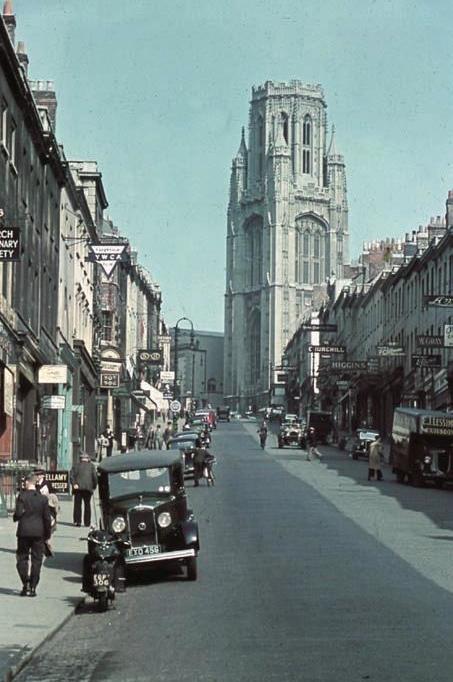
3 minute read
A CITY OF COLOUR
City & colour
Herbert Postlethwaite roamed the city streets in the summer of 1939, recording scenes that would soon be lost forever. Words by Andrew Swift
Advertisement
Old photographs of Bristol have appeared in numerous books over the years, and many more can be found online. Almost all of them, though, are in black and white. This is hardly surprising. Although colour photography has been around for a long time, it was not only technically demanding but very expensive. Even when Kodak and Agfa started producing 35mm colour film in the mid-1930s it was beyond the reach of all but the most dedicated amateur photographers.
As a result, although many people will be familiar with what Bristol looked like before the Second World War, their impressions will almost certainly be of a black-and-white city. A handful of colour photographs of pre-war Bristol do survive, however, and coming across them unexpectedly can be a revelation, bringing a city which is so different, yet so strangely familiar, to life for the first time.
Among the handful of early photographers who captured Bristol in colour was Herbert Postlethwaite. He roamed the city streets in the summer of 1939, recording scenes that would soon be lost forever. After his death in 1970, his son donated over 250 of his photographs to Bristol Museums, and they can now be viewed on the council’s websites. A selection of them also appears in a recent book published as a tribute to his pioneering work.
There are many gems among the collection. One of the most striking is of workmen digging air raid shelters on Brandon Hill. Not a hard hat or hi-vis jacket is in sight, and the only tools in evidence are spades – yet the semi-rural simplicity of the scene is undercut by an awareness of how soon Bristolians would be cramming into these shelters as the bombs rained down.
The storm clouds of war may have been gathering when the photographs were taken, but the streets of the city glowed in sunlight, and life went on. Some scenes are immediately recognisable. Park Street and St Michael’s Hill, for example, have hardly changed at all. A view of High Street from Bristol Bridge, however, is identifiable only from the churches, which still survive, although just about all the other buildings are long gone.
Several of the photos were taken around Bristol Bridge, including a fascinating study of horse-drawn wagons on Welsh Back. While the bridge remains a familiar landmark today, the extent to which the area to the east of it was built up still seems incredible, as does the scale and speed of its destruction. These photographs are a stark reminder of how much was lost.
The importance of the collection is not just historical, however. As a member of both the Bristol and the Royal Photographic Societies, Herbert Postlethwaite had an unerring eye for what makes a good picture. Over 80 years on, the photographs he took in the summer of 1939 can still be an inspiration for anyone prowling the streets of Bristol armed with a camera – or a smart phone – today. ■

• The photographs in the Bristol Museums collection can be viewed at museums.bristol.gov.uk –search term Herbert Postlethwaite. Many of his photographs also feature on the ‘community layer’ of Know Your Place, which can be found at maps.bristol.gov.uk/kyp/?edition=. Details of a new book, Bristol’s Photo Pioneer: HA Postlethwaite, can be found at henleazebook.com Digging air raid shelters on Brandon Hill, August 1929

High Street from Bristol Bridge Park Street










